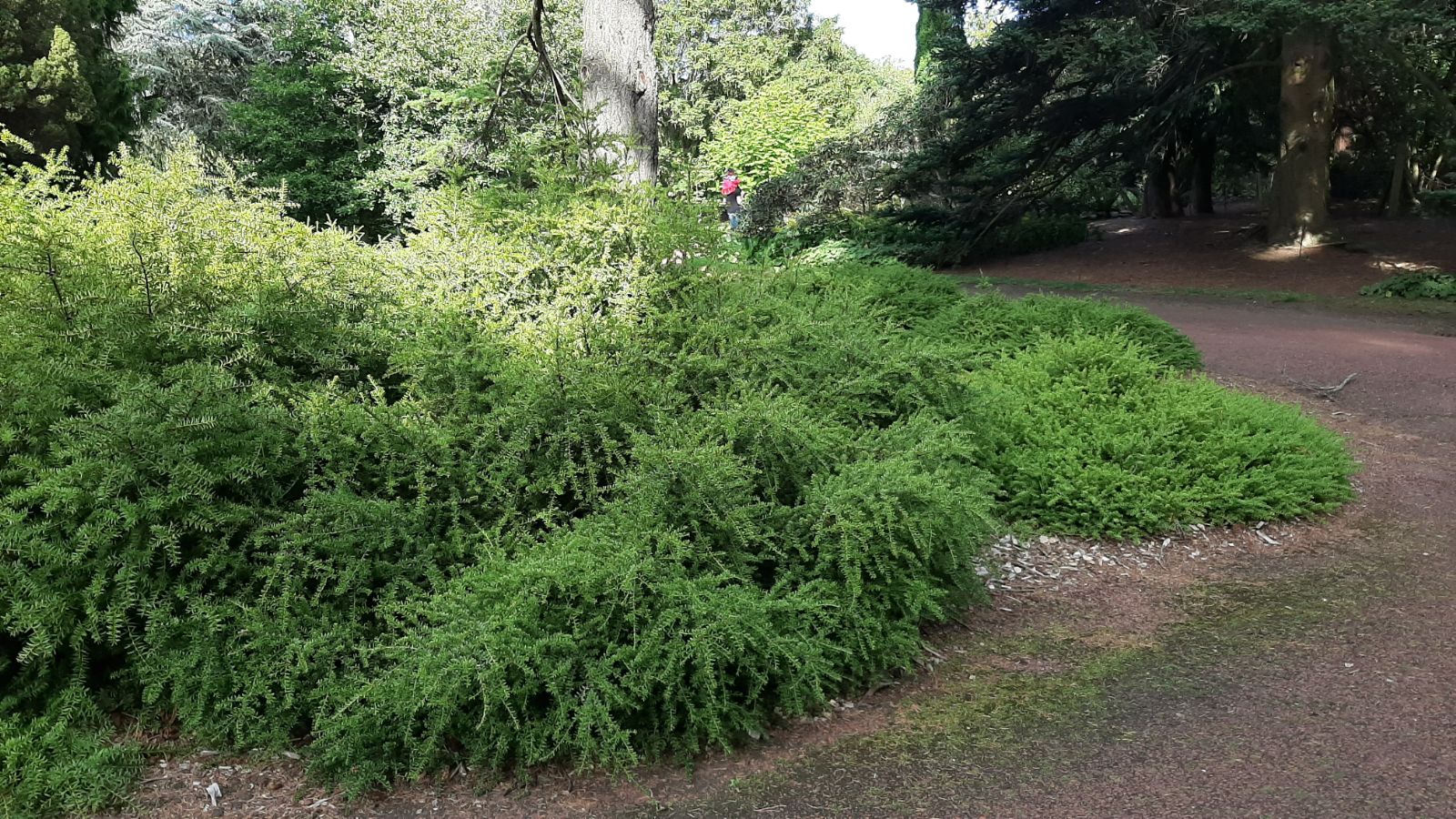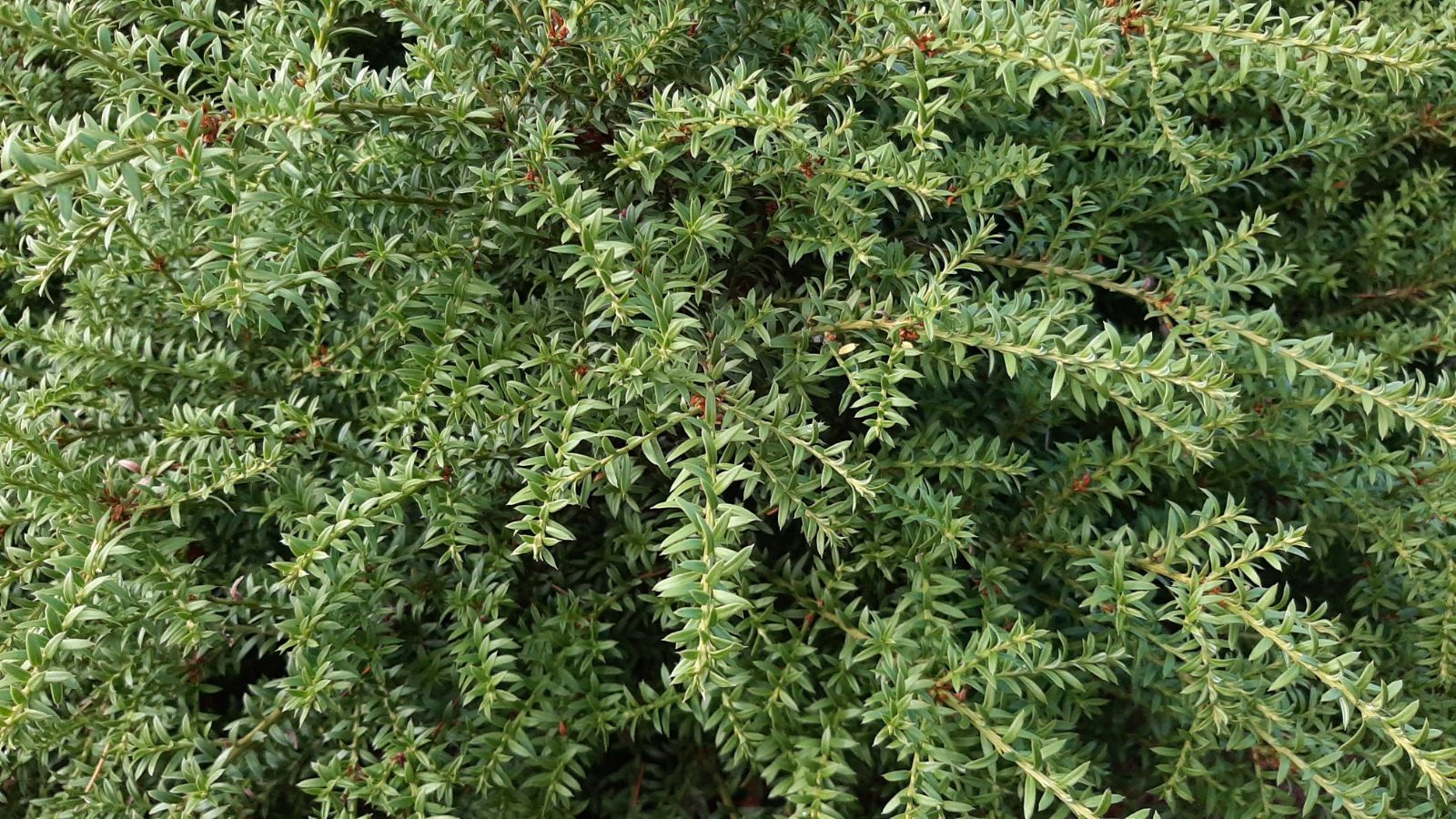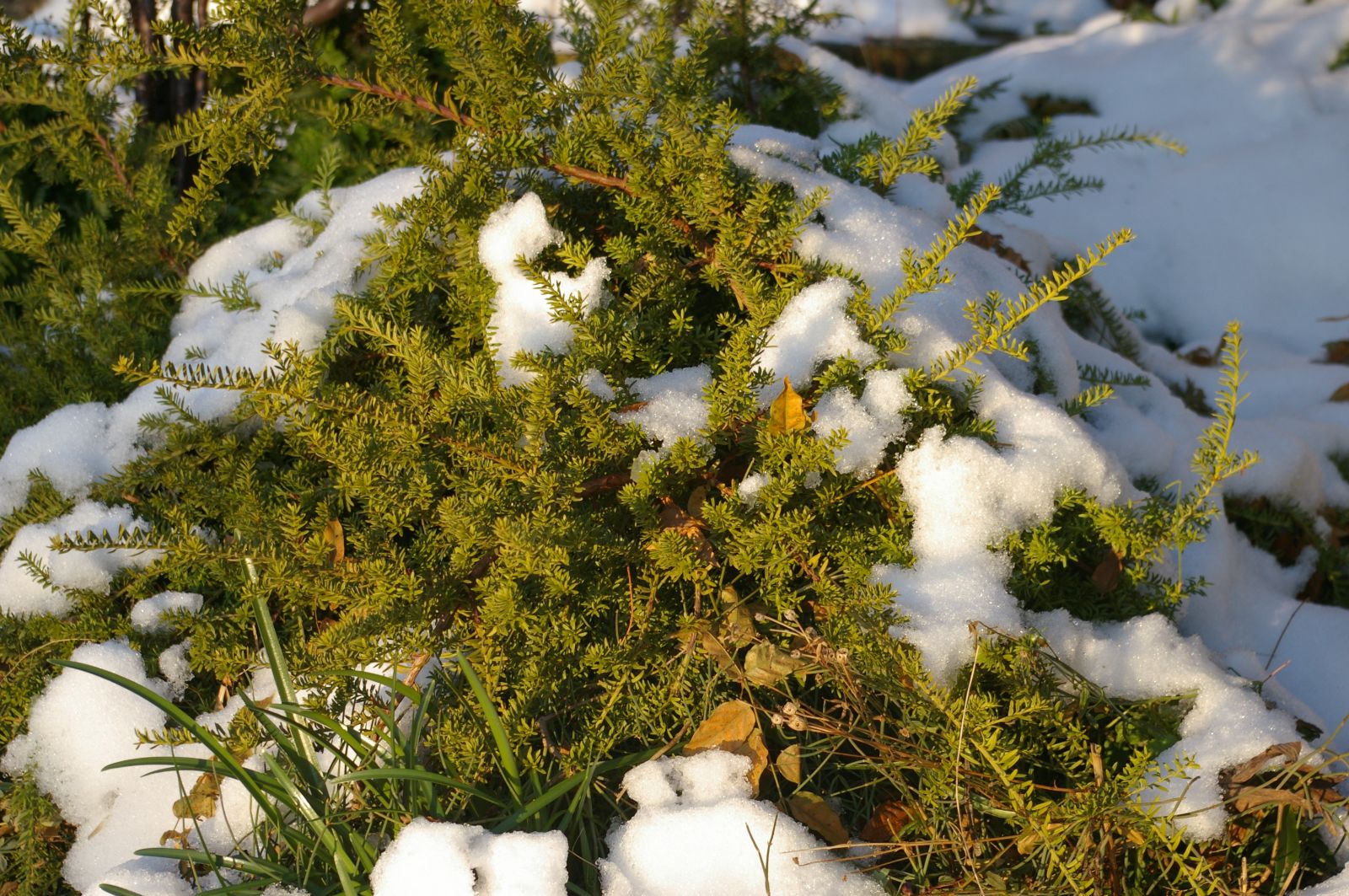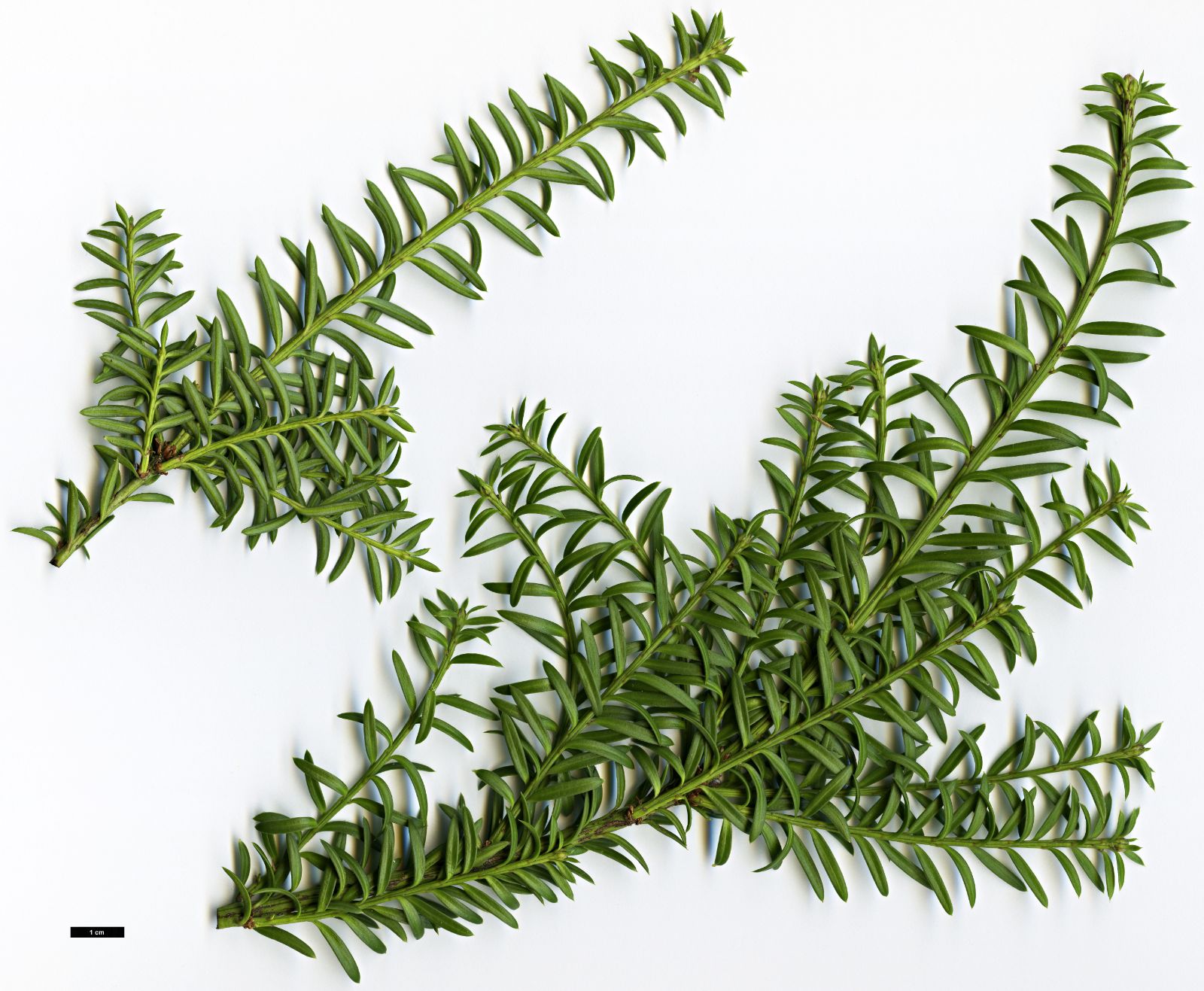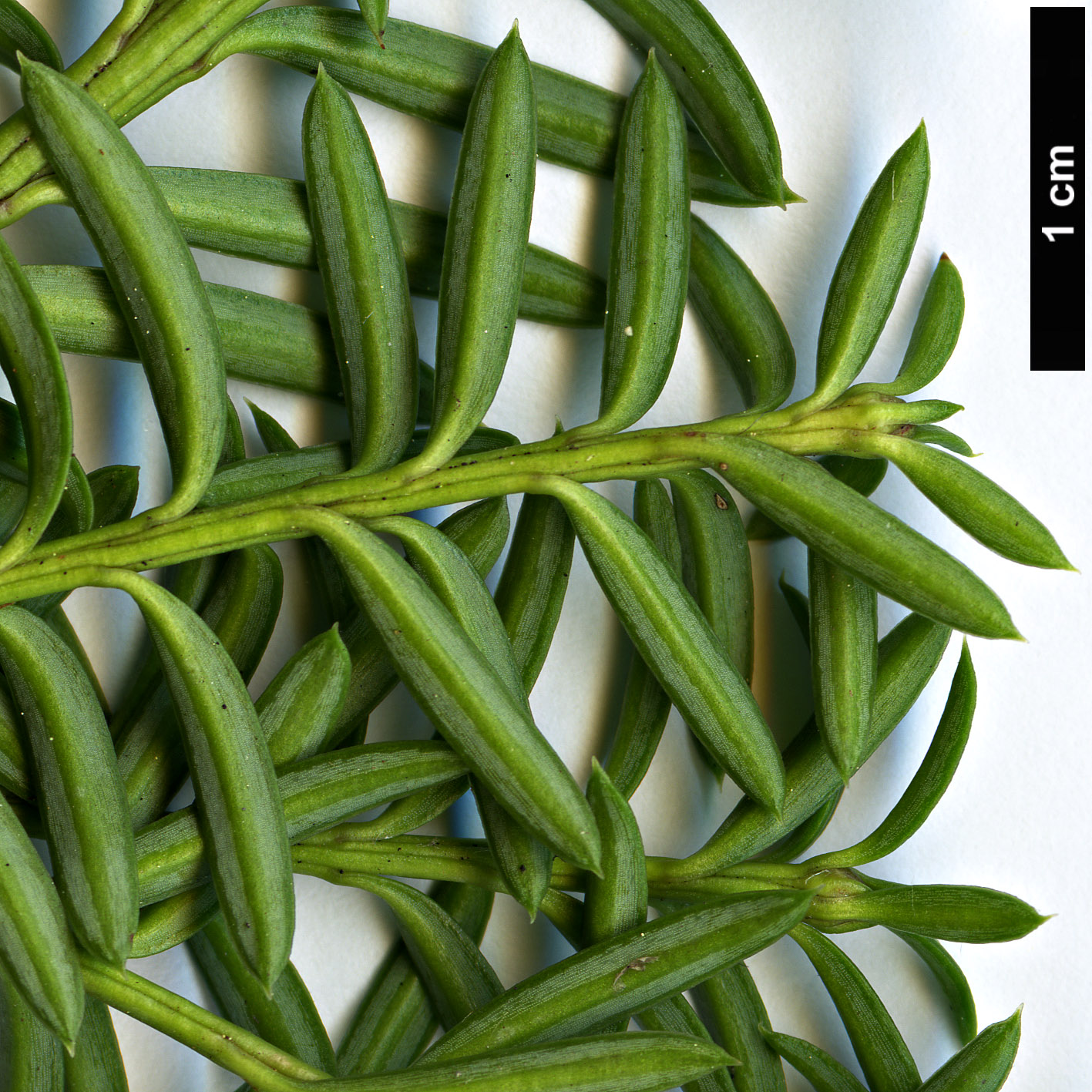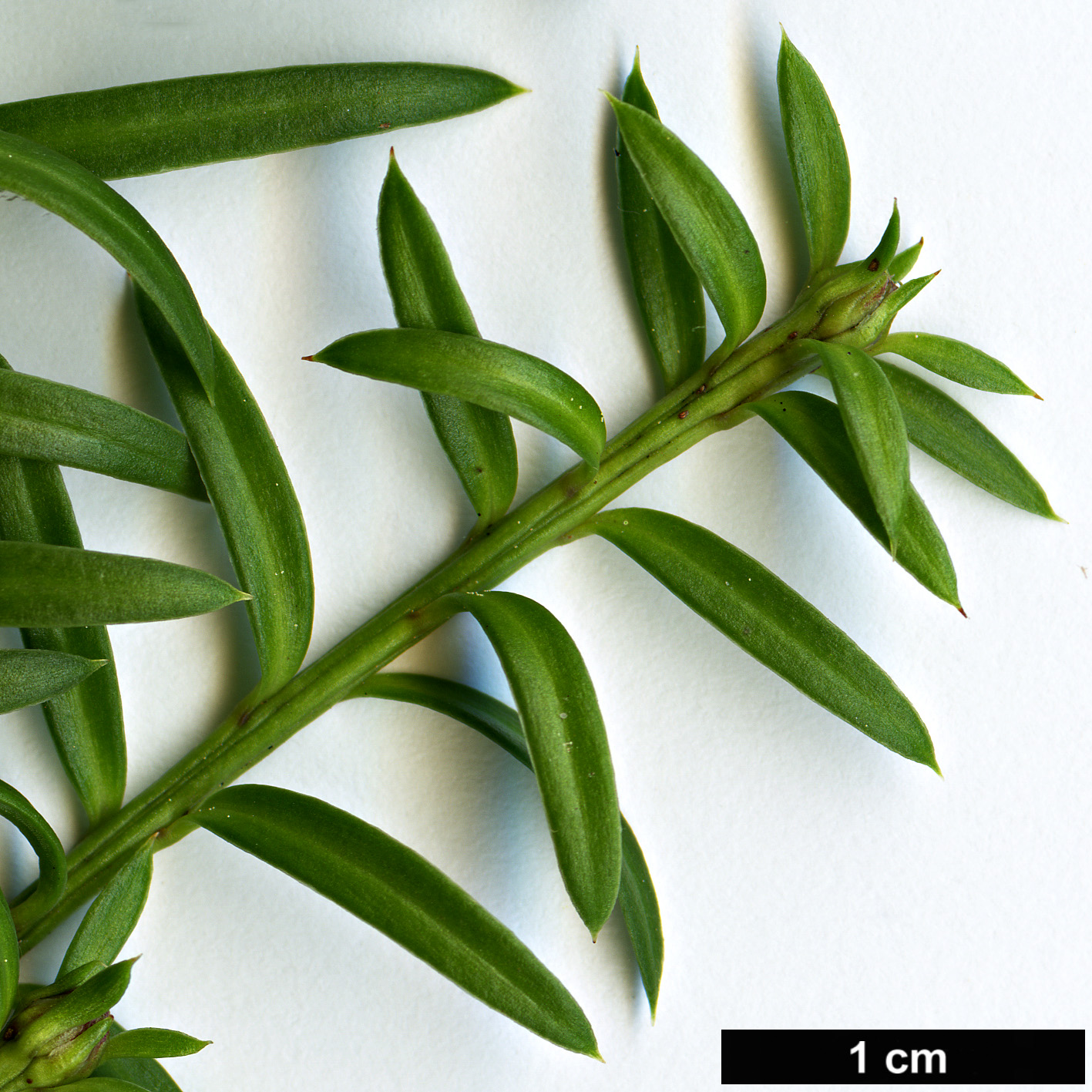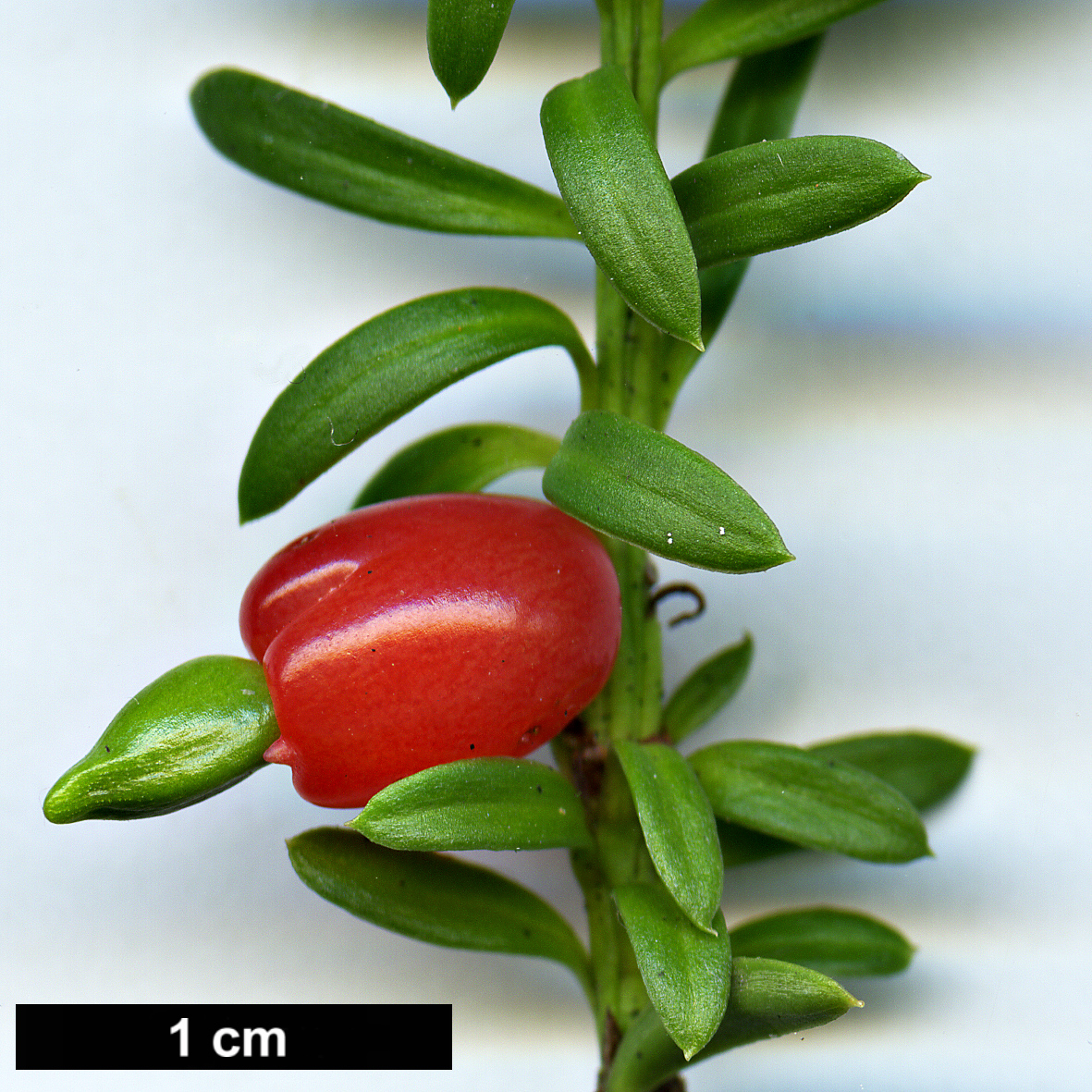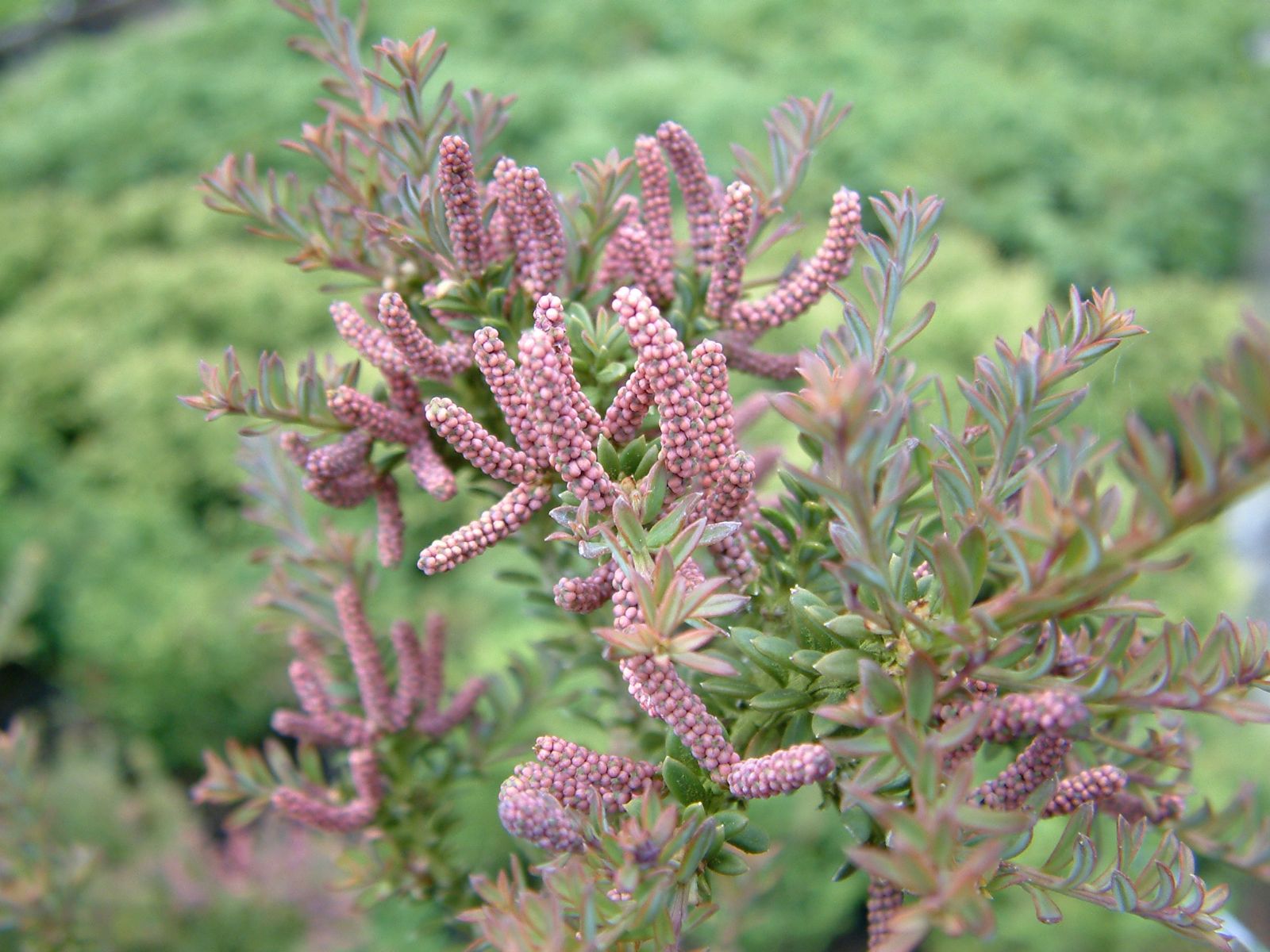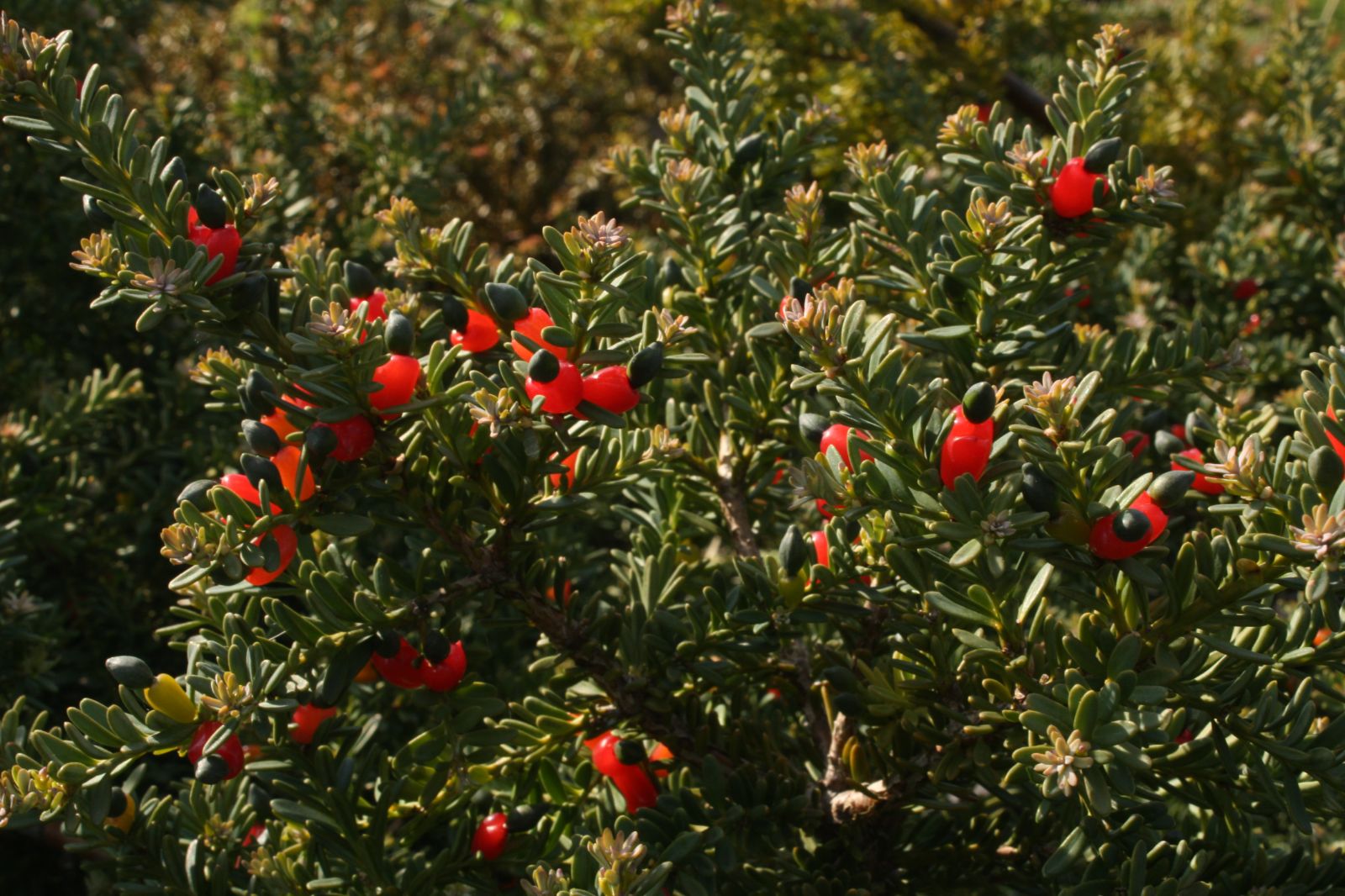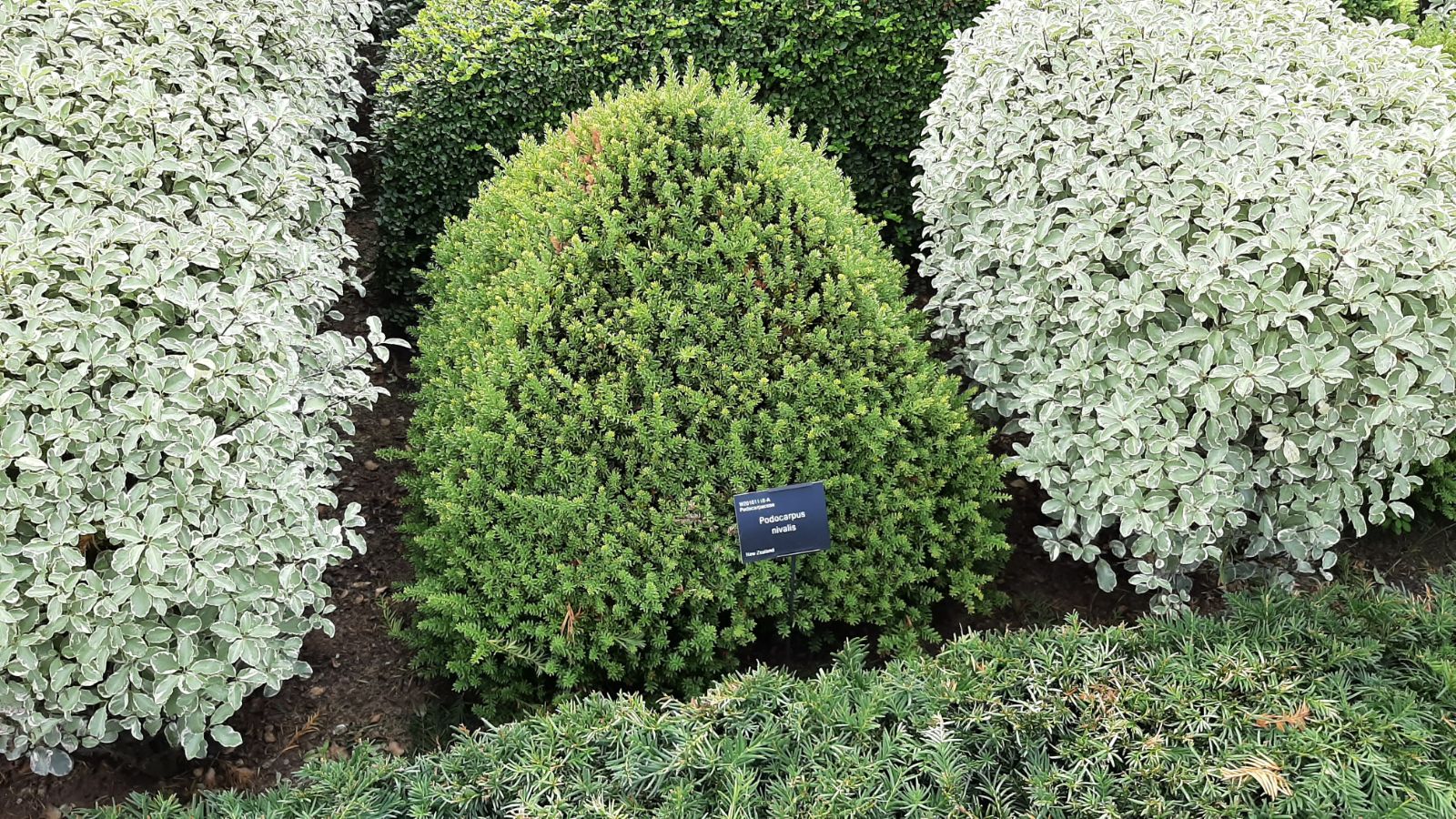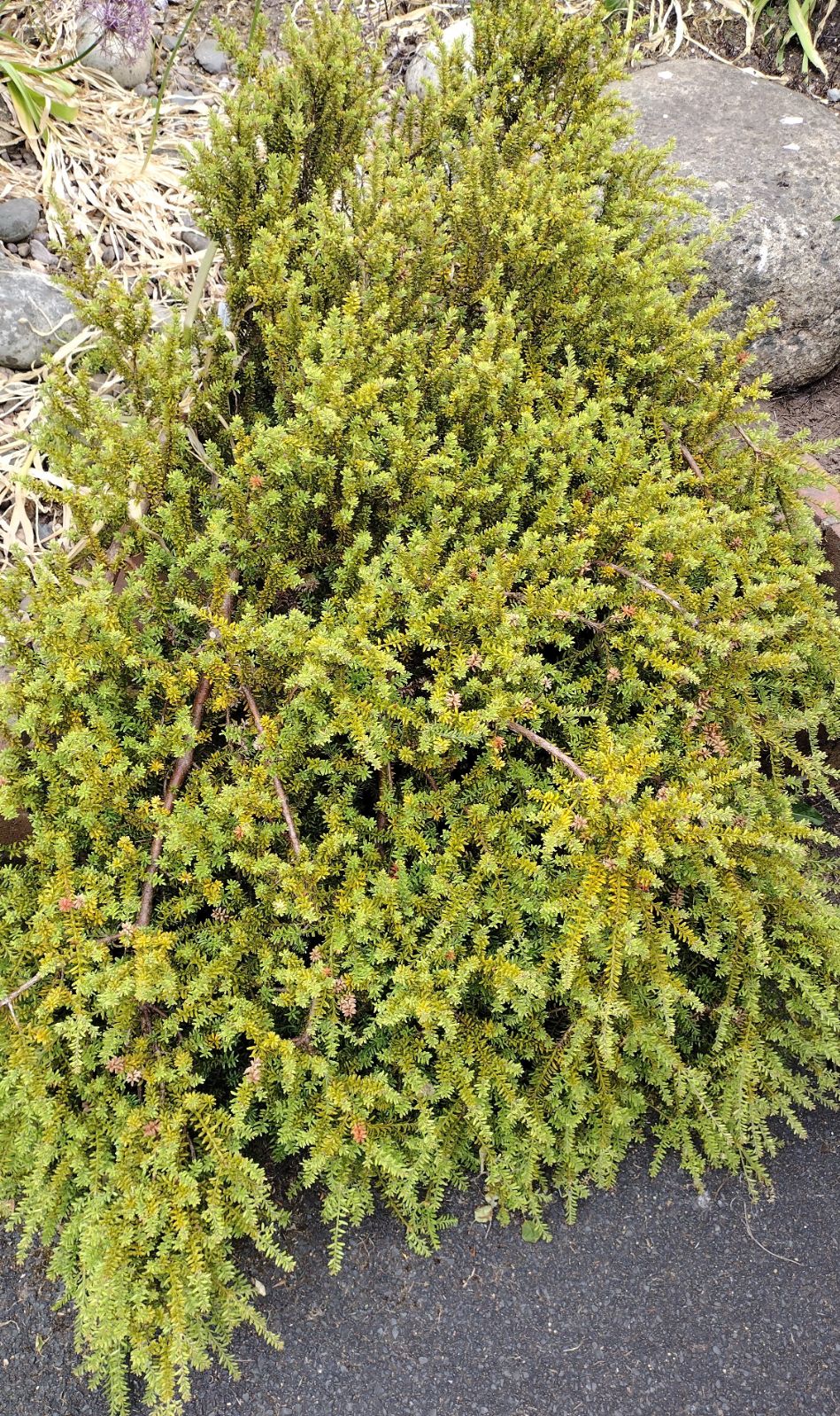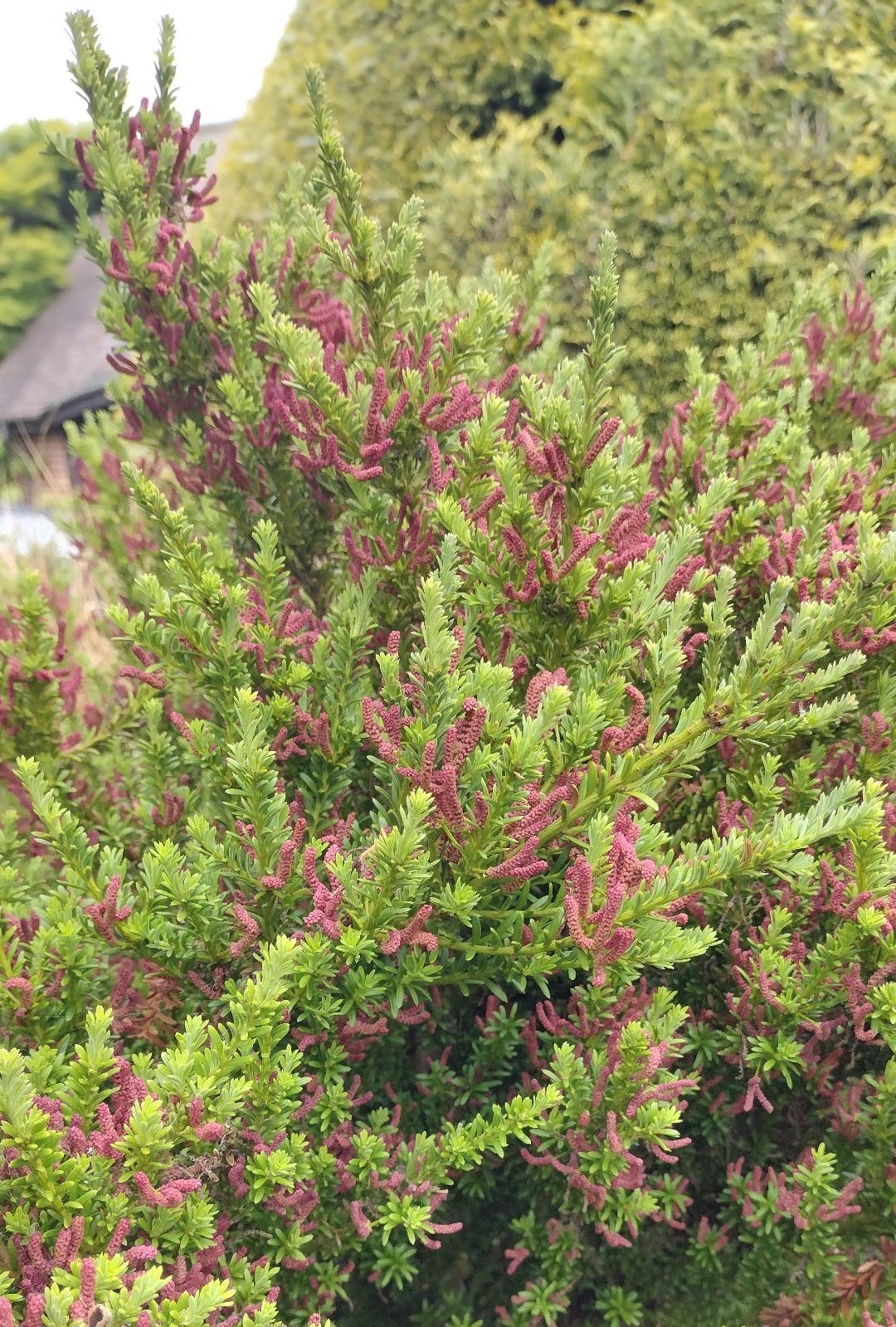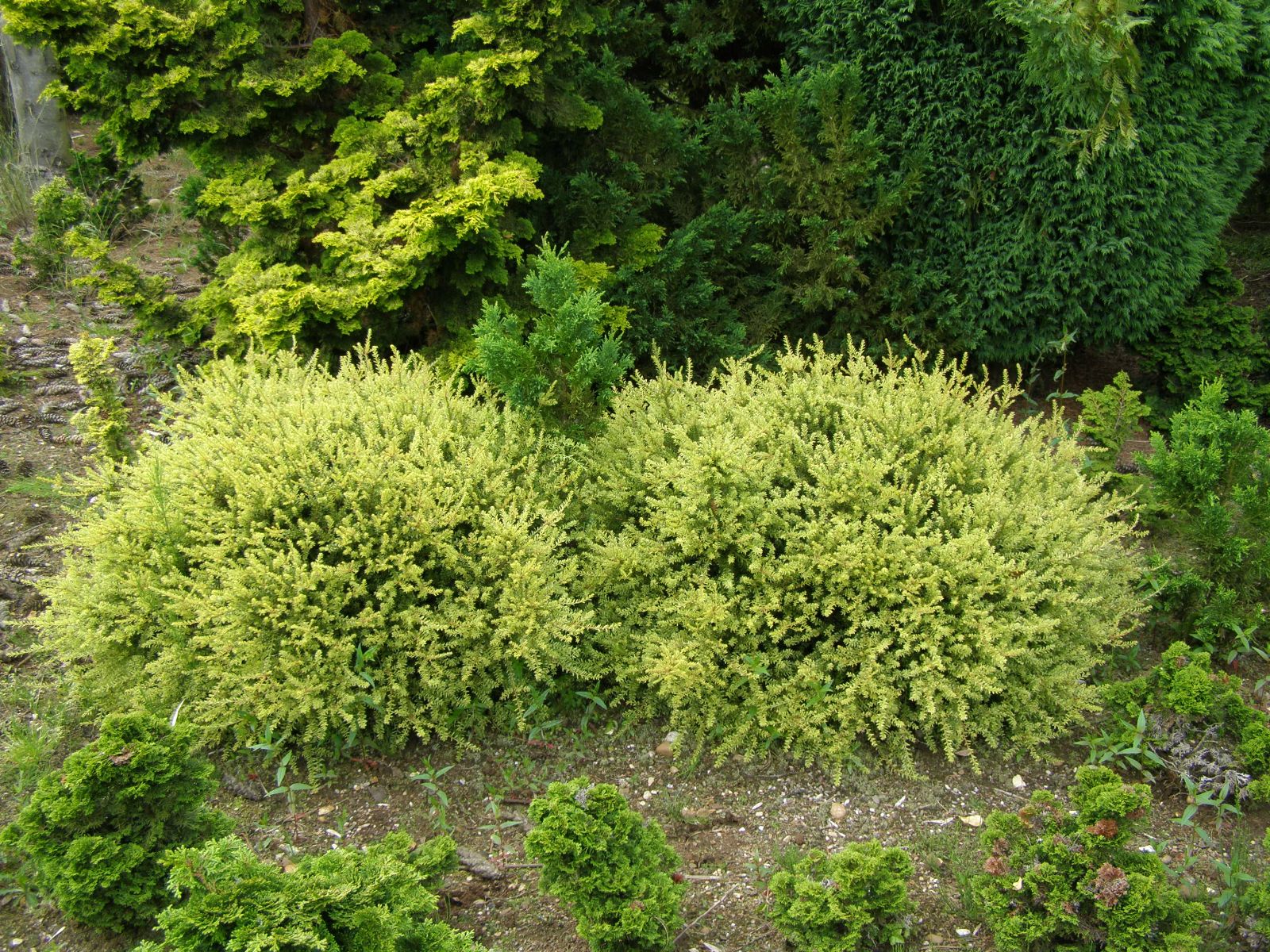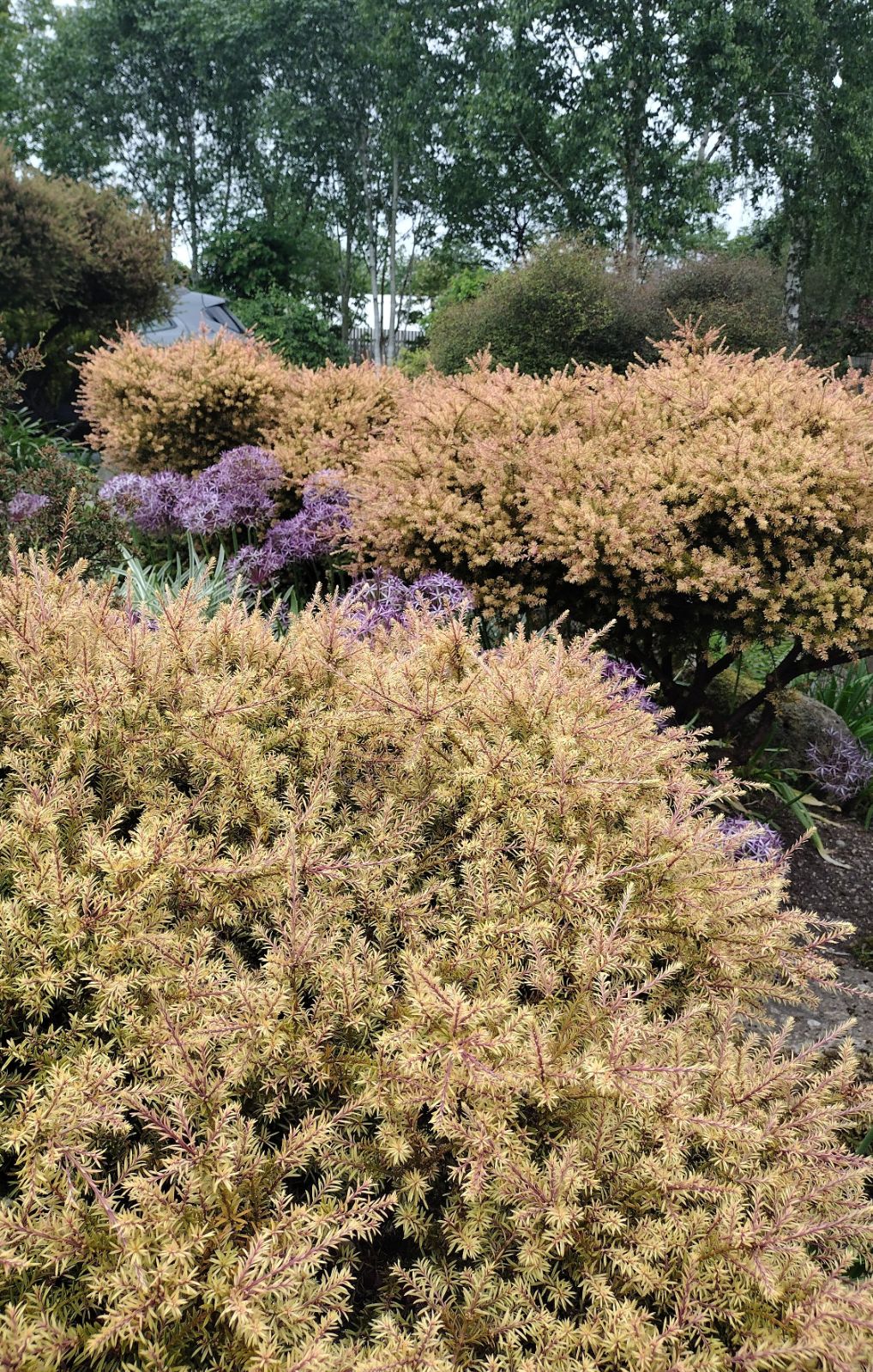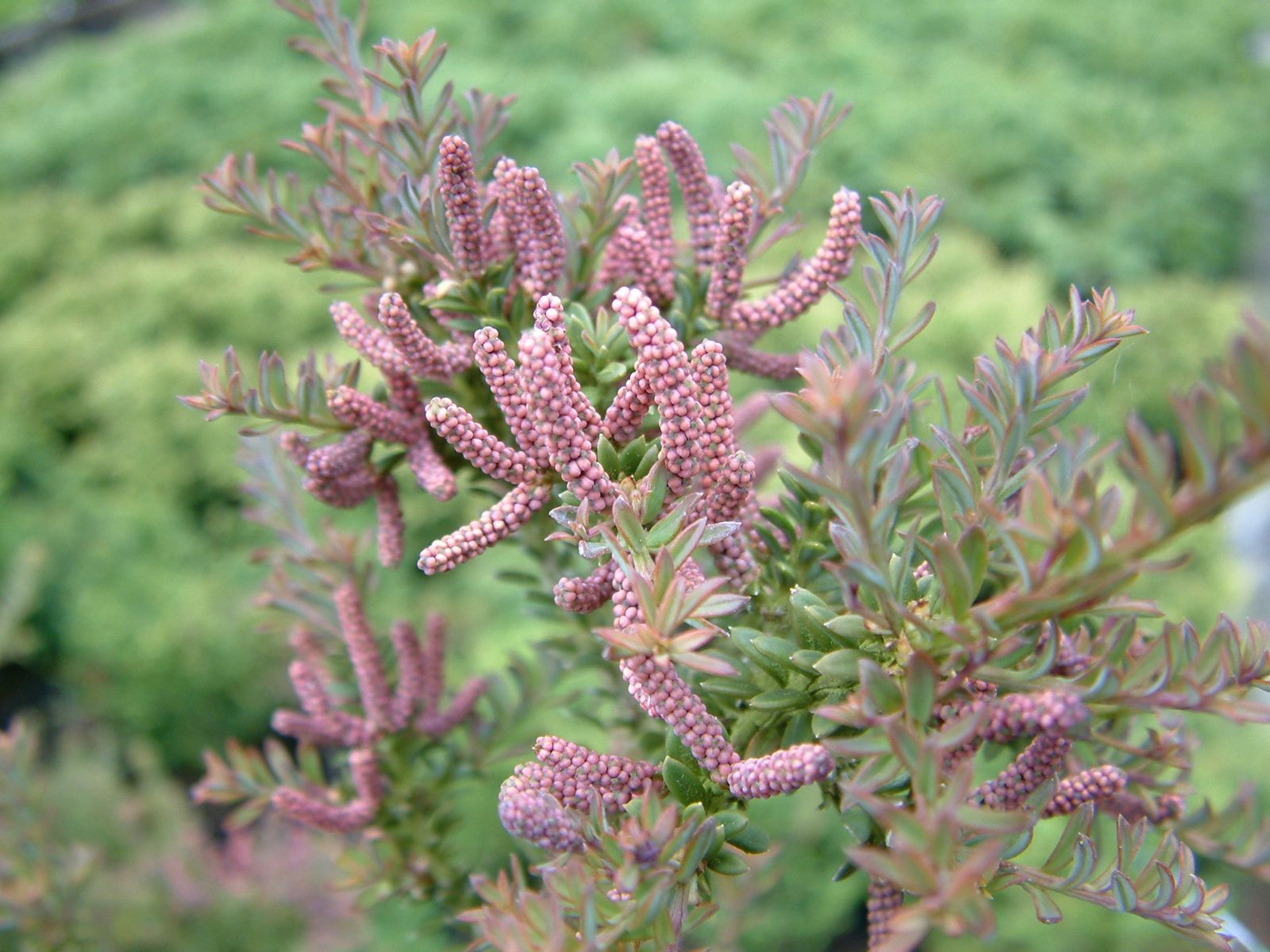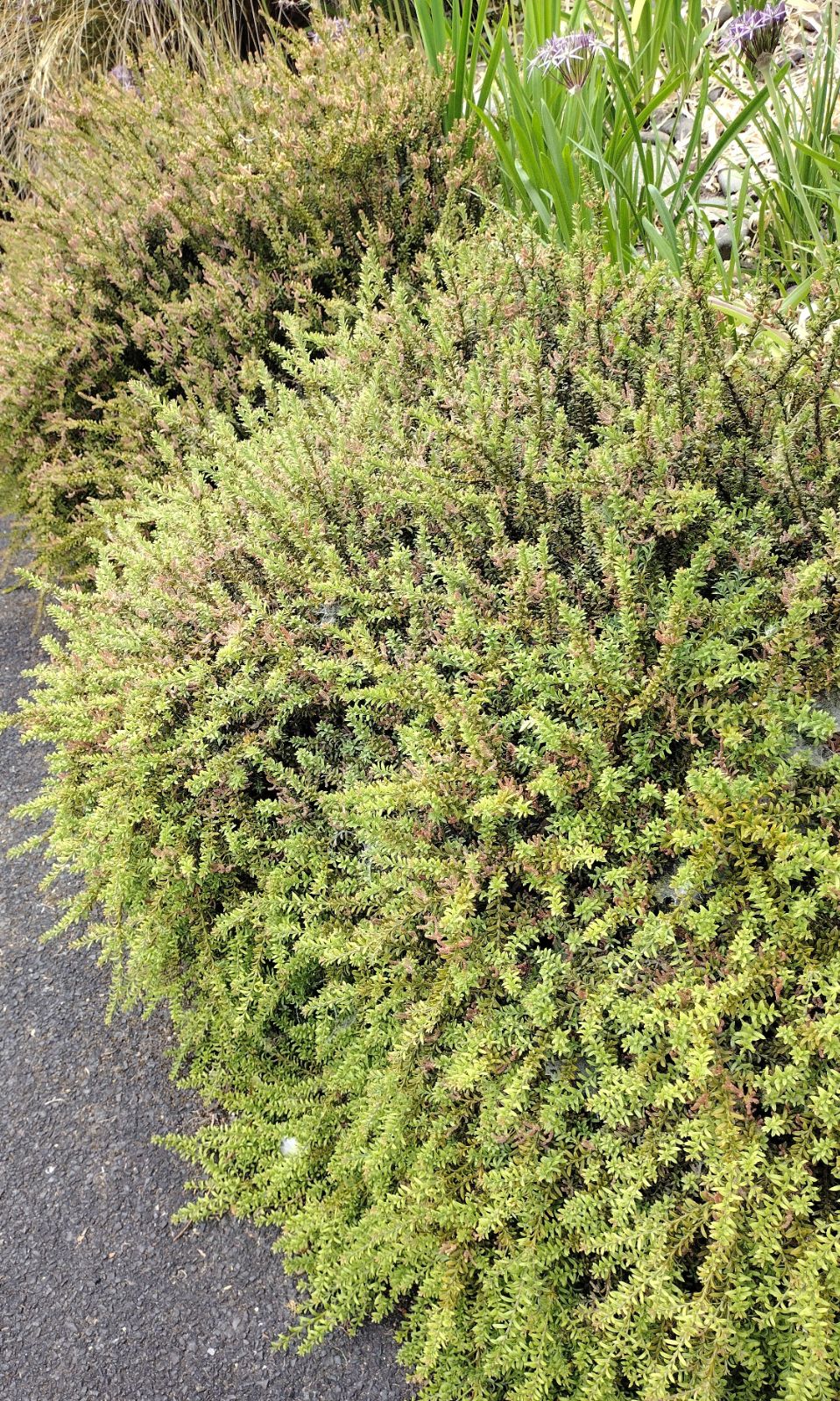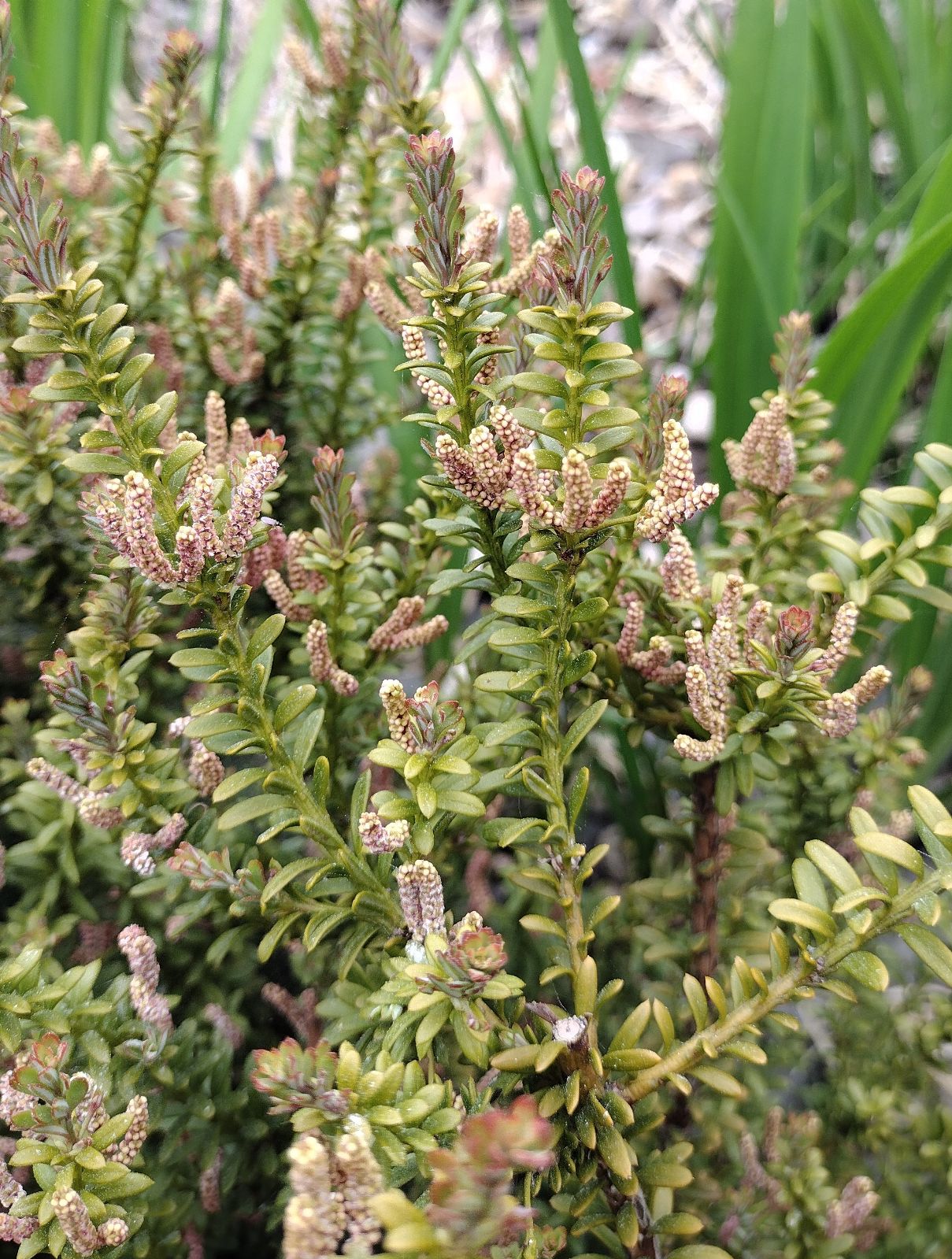Podocarpus nivalis
Sponsor
Kindly sponsored by
The British Conifer Society in memory of Derek Spicer VMM, founder member.
Credits
Tom Christian (2023)
Recommended citation
Christian, T. (2023), 'Podocarpus nivalis' from the website Trees and Shrubs Online (treesandshrubsonline.
Genus
Common Names
- Alpine Totara
- Mountain Totara
- Snow Totara
Synonyms
- Podocarpus nivalis var. erectus Cockayne
Infraspecifics
- 'Arthur'
- 'Bronze'
- 'Christmas Lights'
- 'Clarence'
- 'Green Queen'
- 'Jack's Pass'
- 'Jalako Red'
- 'Kilworth Cream'
- 'Kralingen'
- 'Little Lady'
- 'Livingstone'
- 'Lodestone'
- 'Lucky Lad'
- 'Lyndon'
- 'Maori Prince'
- 'Moffatt'
- 'Mt Hutt'
- 'Otari'
- 'Park Cover'
- 'Pink Tip'
- 'Princess'
- 'Prostrate'
- 'Rockery Gem'
- 'Ruapehu'
- 'Tauhini'
- 'Trompenburg'
Other taxa in genus
- Podocarpus acutifolius
- Podocarpus acutifolius × lawrencei
- Podocarpus acutifolius × nivalis
- Podocarpus acutifolius × totara
- Podocarpus brassii
- Podocarpus costalis
- Podocarpus drouynianus
- Podocarpus elatus
- Podocarpus elongatus
- Podocarpus guatemalensis
- Podocarpus henkelii
- Podocarpus laetus
- Podocarpus laetus × nivalis
- Podocarpus lambertii
- Podocarpus latifolius
- Podocarpus lawrencei
- Podocarpus lawrencei × nivalis
- Podocarpus macrophyllus
- Podocarpus matudae
- Podocarpus milanjianus
- Podocarpus nakaii
- Podocarpus neriifolius
- Podocarpus nubigenus
- Podocarpus oleifolius
- Podocarpus parlatorei
- Podocarpus pilgeri
- Podocarpus pseudobracteatus
- Podocarpus salignus
- Podocarpus spinulosus
- Podocarpus totara
Multistemmed shrub 0.2–2.5 m; upright plants often wider than tall; decumbent plants forming an extensive mat to several square metres <0.5 m tall. Branches densely set, spreading or ascending; leading shoots of decumbent plants creeping, whip-like. Branchlets greenish for several years. Terminal buds very small with imbricate scales, usually obscured among leaves. Foliage typically mid-green, often bronze or yellowish, rarely reddish or purplish, usually greener in summer and colouring in winter. Leaves thick, stiff, leathery, naviculate (boat-shaped) to long-ovate, 3–15 × 2–4 mm, midrib obtuse and conspicuous below with two stomatal bands either side; base narrowly decurrent, margins thickened, apex apiculate to obtuse. Pollen cones solitary or in clusters of 2–4 on a common peduncle, peduncle 3–5 mm, cylindrical, slender, 5–15 × 1–1.5 mm at maturity, each subtended by several papery bracts. Seed cones solitary, subsessile to short-petiolate (to 3 mm) with two bracts which fuse to become a swollen, fleshy, receptacle 8–10 × 8 mm, green at first, red to crimson at maturity; seed including the epimatium bright green 4–5 × 3 mm. (Farjon 2017; Debreczy & Rácz 2011; Allan 1961).
Distribution New Zealand North and South Islands from Mt Hikurangi and Mt Pirongia south; Stewart Island
Habitat Montane to sub-alpine areas 800–2500 m asl (more or less restricted to the sub-alpine zone on the North Island), especially in open grassland with Hebe, Olearia, Dracophyllum etc., and in scrub with the conifers Halocarpus bidwillii, Phylocladus trichomanoides var. alpinus and Lepidothamnus laxifolius. Common in exposed rocky areas; occasionally extending into the upper reaches of Nothofagus forest. On South Island, in Westland and Fjordland, it can descent to sea level and forms part of the low-elevation subalpine community.
USDA Hardiness Zone 7a
RHS Hardiness Rating H7
Conservation status Least concern (LC)
Of all the shrubby alpine species grown across our area Podocarpus nivalis is perhaps the most important and widely grown. In nature it is a plant of montane to sub-alpine habitats, occurring in areas of scrub and open grassland, and across much of its range spends its winters in cold conditions often with abundant snowcover. On New Zealand’s South Island, especially in the far south, it descends to sea level and is a constituent of low elevation subalpine plant communities ‘thriving on rocky slopes with plenty of cool rain and mist but no winter snow’ (Debreczy & Rácz 2011).
P. nivalis was described in 1843, but Bean considered that it probably wasn’t introduced to British horticulture until early in the 20th century (Bean 1976). Those early introductions, like subsequent ones, yielded plants that differed widely in habit, from almost prostrate mats to mound-forming and upright shrubs. Bean also suggested that their hardiness varied too, and whilst this is probably true to a limited extent, other factors likely influenced early successes and failures in British gardens. This species is ideally suited to the rock garden, but while small in stature it should not be mistaken for a dwarf; examples to 1.5 m tall × 2 m across are not uncommon in Britain (pers. obs.). Mat-forming clones lend themselves to use as ground cover, but P. nivalis is not so shade tolerant as many other podocarps; it will tolerate the light shade of woodland edges and similar situations, but it will not thrive in deep shade.
P. nivalis hybridises in the wild with other New Zealand podocarps where their ranges overlap, particularly P. laetus, and it has been crossed in cultivation with the Australian P. lawrencei. Numerous colour forms have been selected and introduced to commerce, principally by the late Graham Hutchins of County Park Nursery, Essex, UK, who collected seed of this species from many different locations across New Zealand on a series of visits from 1977 to 1990, often targeting individuals that stood out within populations for one character or another (Hutchins 1996). His novel hybrids have produced some good garden plants that have entered mainstream horticulture, but the range of Hutchins’ P. nivalis selections, discussed below, are the predominant part of his legacy. Their hybrid notwithstanding, P. lawrencei and P. nivalis are easily confused in gardens in their vegetative state; they differ most obviously in cone details, with both the male and female cones of P. nivalis being slightly larger than those of P. lawrencei, although there is overlap. P. lawrencei tends to have leaves with a more gradually tapering, acute or even pungent apex, while the apex tends to narrow abruptly in P. nivalis, which also tends to have marginally larger, stiffer leaves, but vegetative characters such as these are irritatingly variable.
'Arthur'
A spreading plant forming a large, low mat with yellow-green foliage. Raised from seed gathered on Mount Arthur (Tuao Wharepapa), New Zealand, by the British nurseryman Graham Hutchins in 1990 (Auders & Spicer 2012).
'Bronze'
Synonyms / alternative names
Podocarpus nivalis 'Aureus'
A dwarf, compact shrub with bronze foliage, the colour is especially vivid in new spring growth. To 50 × 80 cm in ten years in the UK. Selected in New Zealand before 1966, it was renamed ‘Aureus’ by a British nursery in 1971 (Auders & Spicer 2012).
'Christmas Lights'
A dwarf shrub of very slow growth, raised from seed collected by Graham Hutchins on Mount Moffat, New Zealand in 1985. The green foliage turns brownish in winter, when even as a young plant it is covered in persistent red seed cones, hence the name (Auders & Spicer 2012).
'Clarence'
A somewhat upright, male plant that produces abundant pink catkins, raised from seed gathered on the upper Clarence River (Waiau Toa), New Zealand, by Graham Hutchins in 1981. ‘A good pollinator’ note the keen breeders and nurserymen Aris Auders and Derek Spicer (Auders & Spicer 2012).
'Green Queen'
A vigorous form with bright green leaves collected near Lake Tennyson, Canterbury, New Zealand, by Graham Hutchins in 1977 (Auders & Spicer 2012).
'Jack's Pass'
Perhaps a hybrid with P. laetus, Graham Hutchins selected this form with large (10–16 mm long) leaves from an upright 2 m shrub growing near Jack’s Pass, Canterbury, New Zealand, in 1977. The foliage remains green year round (Auders & Spicer 2012).
'Jalako Red'
A compact shrub with erect growth, at least in youth. The foliage is a good dark green in summer, turning a deep wine red in winter. It was selected in Kools Nursery, Netherlands by Nelis Kools who named it for both his parents, Jan and Laura Kools, hence ‘Jalako’ (iseliursery.com).
'Kilworth Cream'
A very hardy, particularly slow-growing plant forming a small, rounded shrub with pale green foliage, the new growth cream, sometimes flushed pink. The late Derek Spicer found it as a sport on an old plant high on Mount Moffat, New Zealand, in 1985 (Auders & Spicer 2012).
'Kralingen'
A low-growing female clone with bright green leaves, raised from seed at Arboretum Trompenburg, the Netherlands, before 1996 (Auders & Spicer 2012).
'Little Lady'
A dwarf plant of exceptionally slow growth, producing abundant crops of seed cones even when young. To 20 × 45 cm in ten years, it was grown from seed collected on Mount Princess, New Zeland, by Graham Hutchins prior to 1991 (Auders & Spicer 2012).
'Livingstone'
A very slow-growing shrub with bright green foliage and abundant crops of seed cones. Raised from seed gathered in the Livingstone Mountains, New Zealand, by Graham Hutchins in 1985 (Auders & Spicer 2012).
'Lodestone'
A mat-forming male plant with reddish pollen cones, selected by Graham Hutchins from seed gathered near Mount Arthur (Tuao Wharepapa), New Zealand, in 1990 (Auders & Spicer 2012).
'Lucky Lad'
A slow-growing male shrub to 1 × 1 m in ten years, notable for its abundant display of red pollen cones which are borne in dense clusters on short peduncles, so numerous they appear branched. Raised by Graham Hutchins before 1986 (Auders & Spicer 2012).
'Lyndon'
Raised from seed collected from a prostrate plant of P. nivalis growing near Lake Lyndon, New Zealand, in 1990 and named by Graham Hutchins for its upright habit and fast rate of growth. Its upright habit, vigour, and large, sharply-pointed yellow-green leaves (to 20 mm long) all suggest it is a hybrid (Auders & Spicer 2012).
'Maori Prince'
A slow-growing upright male plant which produces pink pollen cones in great abundance. The green foliage turns mauve in winter. To 1 × 0.6 m in ten years, it was raised from seed by Graham Hutchins in about 1986 (Auders & Spicer 2012).
'Moffatt'
A compact, rounded, slow-growing female plant with dark green foliage, bronzing slightly in winter, freely producing seed cones. Raised from seed collected on Mount Moffat, New Zealand (note the discrepancy in the spelling of the mountain and the cultivar) by Graham Hutchins before 1993 (Auders & Spicer 2012).
'Mt Hutt'
A small, low, spreading plant, to 30 × 90 cm in ten years. It was selected by Graham Hutchins from the Mt Hutt area of South Island, New Zealand, prior to 1985 (Auders & Spicer 2012).
'Otari'
A dense, rounded, male plant notable for its slow rate of growth, the abundant production of brownish-pink pollen cones, and its short leaves to just 10 mm long. It was selected prior to 1975 by the Otari Plant Museum in Wellington, New Zealand (Auders & Spicer 2012).
'Park Cover'
A small yet robust, mat-forming plant with bright green leaves to 20 mm long (well beyond the normal size for the species, suggesting the influence of another). Raised from seed collected from a prostrate plant growing on Mount Southey, Canterbury, New Zealand, by Graham Hutchins in 1981. To only 15 × 75 cm in ten years (Auders & Spicer 2012).
'Pink Tip'
A rare example of an American cultivar, ‘Pink Tip’ is a slow-growing upright plant with green foliage; the fresh spring growth is pink at first. To 60 × 40 cm in ten years. Listed by Stanley & Sons Nursery, USA, in 2009 (Auders & Spicer 2012).
'Princess'
A robust, mat-forming female plant with the fresh spring growth bronze, turning green in summer. Raised from seed gathered on Mount Princess, New Zealand, by Graham Hutchins in 1981 (Auders & Spicer 2012).
'Prostrate'
A wide-growing mat raised from seed collected on Mount Southey by Graham Hutchins in 1981 (Auders & Spicer 2012). The unimaginative name could be taken to suggest that Hutchins applied this as a ‘holding’ name, perhaps giving the more imaginative ‘Park Cover’ to a better form (q.v.).
'Rockery Gem'
This densely branched plant is not so small as its name might suggest; in ten years it can reach 1 × 1 m. Cultivated in the Netherlands prior to 1996, but details of its origin are lacking (Auders & Spicer 2012).
'Ruapehu'
Similar to ‘Otari’ but with larger leaves, this selection was raised from seed collected in 1990 on Mount Ruapehu, New Zealand, by Graham Hutchins. In ten years it can achieve 60 × 70 cm (Auders & Spicer 2012).
'Tauhini'
A plant bearing this name was growing in the Savill Garden, Windsor Great Park, UK, in 2010, but no details of its origin were known to Auders & Spicer (2012) whose photographs (p. 1194) show a low, spreading mound with brownish green foliage and red seed cones, the tips somewhat silvery, as though covered with a very fine frost.
'Trompenburg'
A male plant of dense growth, to 1 × 1.2 m in ten years. Listed by Edwin Smits, the Netherlands, in 2009, and presumably selected from the eponymous arboretum (Auders & Spicer 2012).

